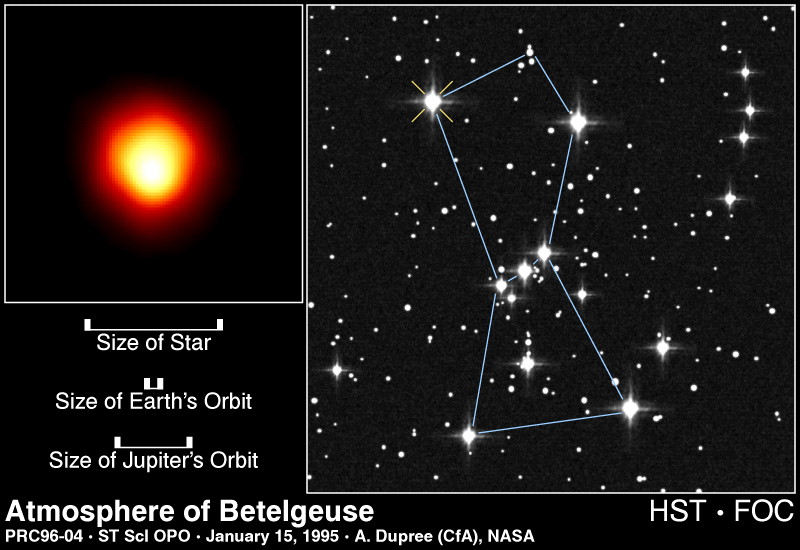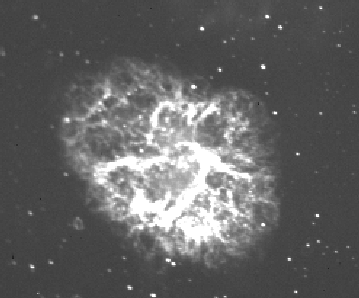Death of big stars and supernovae
Consider a massive star like Betelgeuse. This is the one star that
has a large enough size and is near enough (~100 pc) to us that we can see
it as a disk with the Hubble Space telescope:

Stars that start out very massive as O and B stars don't live very long. They explode, as
we will discuss in some detail.
Type II supernovae
An exploding massive star (say M ~ 20 Msun) produces a very
large energy release. Some of this comes in the form of visible light,
so that the supernova reaches a peak luminosity of about 109
Lsun which lasts for several days and then fades away over
a period of weeks. If it is in our galaxy and not obscured by dust, a
supernova can be recognized as a ``new star.''
A supernova leaves behind gas expanding through space, a ``supernova
remnant.''
The most famous example is a supernova in the constellation Taurus that
exploded on 4 July 1054. (Actually 1054 minus the 6500 year light
travel time to Earth.) Observations of this supernova were recorded by
Chinese and Japanese astronomers and also (possibly) in an Anasazi rock
painting in New Mexico. Europeans seem not to have paid much
attention. The left over remnant is called the Crab Nebula.

The filaments are expanding. Doppler shift measurements of the
rate of expansion are consistent with an explosion date around 1100 AD.
Here is a small part of another supernova remnant,
the Cygnus Loop.
Here is another, N123D
in the Large Magellenic Cloud.
Importance of Supernovae
- Heavy elements are made in the big massive stars and spread through
the galaxy by supernovae.
- Some of the heavy element production is in nuclear fusion before the
supernova explosion.
- Additional heavy element production (including elements beyond iron)
occur during the explosion, as the shock wave heats the stellar material.
- It puts iron into your blood.
- The shock waves from supernovae explosions play a role
in triggering star formation.
Davison E. Soper, Institute of Theoretical Science,
University of Oregon, Eugene OR 97403 USA
soper@bovine.uoregon.edu


